




 [Radtour SŘd2]
[Radtour SŘd2]
History of Dorsten - Station 47: Franciscan Sisters
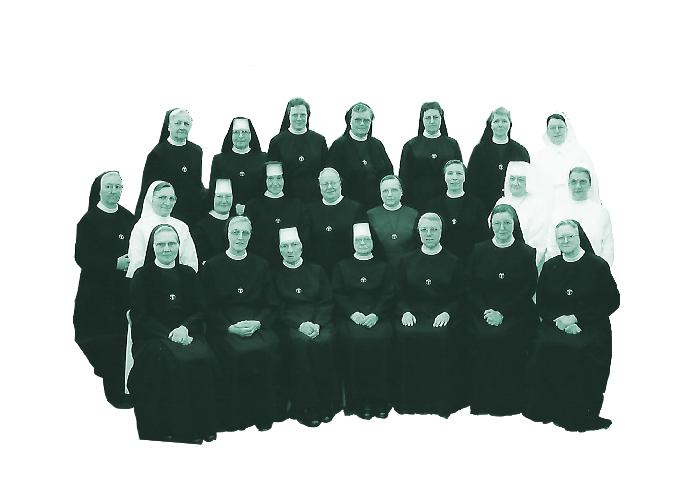
Franciscan Sisters are religious communities and congregations for women that emerged from the members of the Third Order of Saint Francis. They are also referred to as Tertiaries or "regulated third order." The Franciscan Sisters live according to the active life with an apostolate in the field of caring for the needy, the weak, the sick, and the elderly, as well as in the areas of education and the proclamation of the Gospel.
In the 19th century, after the end of the Kulturkampf (cultural struggle), there was a significant growth of new socially and charitably active women's communities. These groups were often drawn to the ideals of Saint Francis and aligned their statutes with the Franciscan Third Order Rule. For the first time, a new type of religious sister emerged here: While religious sisters had previously lived predominantly contemplative lives within the confines of their cloisters, these new religious women ventured out into the world to alleviate the suffering and needs of people through social engagement.
|
|
1844 |
_ |
Along with two other women, Maria Katharina Wiethoff from Altschermbeck takes on nursing duties in a house belonging to the rope maker Ridder "Im K├╝hl." Under the name "Merciful Sisters," they establish a conventual community in 1849. | |
|
|
1850 |
_ |
The sisters join the Third Order of Franciscan Sisters in 1850. Two years later, the Bishop of M├╝nster places the young community in Dorsten under the Franciscan Sisters at St. Mauritz near M├╝nster. | |
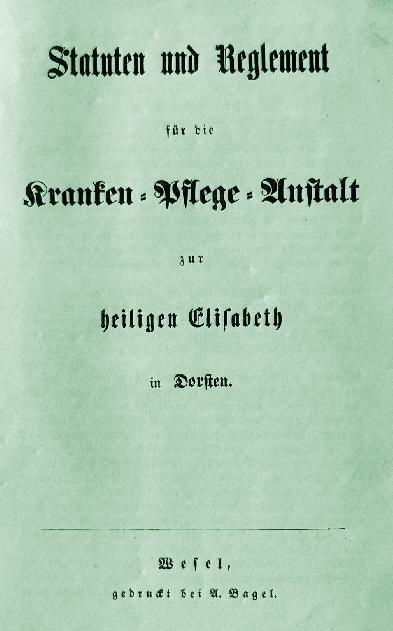 Statutes of the Hospital for Patient Care |
1854 |
_ |
With the establishment of the "Hospital of St. Elizabeth" the Franciscan Sisters from St. Mauritz take on the care of the patients and the household service. | |
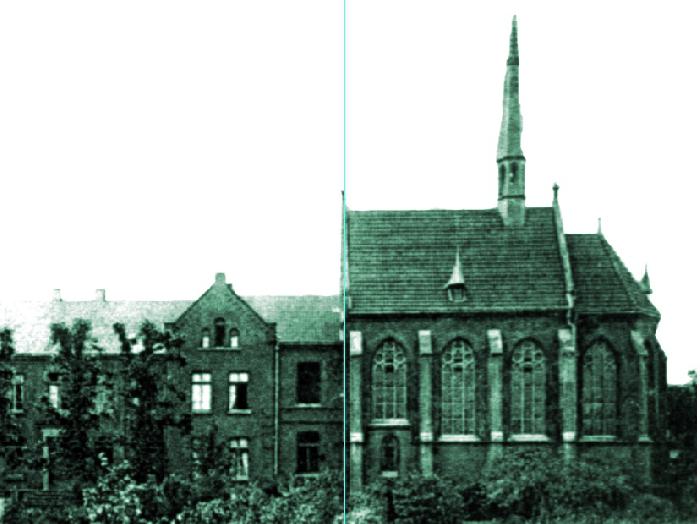 Hospital chapel |
1882 - 1923 |
_ |
During the 41-year tenure of Mother Neophyta as the head nun, significant advancements are made in patient care at the Dorsten Hospital. By 1921, the convent consists of 29 sisters. Since 1898, the Franciscan Sisters have had their own chapel within the hospital premises for fulfilling their religious duties, which is also accessible to the hospital's patients. | |
|
|
1914 -1918 |
_ |
During World War I, the Franciscan Sisters also care for wounded soldiers and prisoners of war. In the war year 1917, they attend to 2,089 individuals. | |
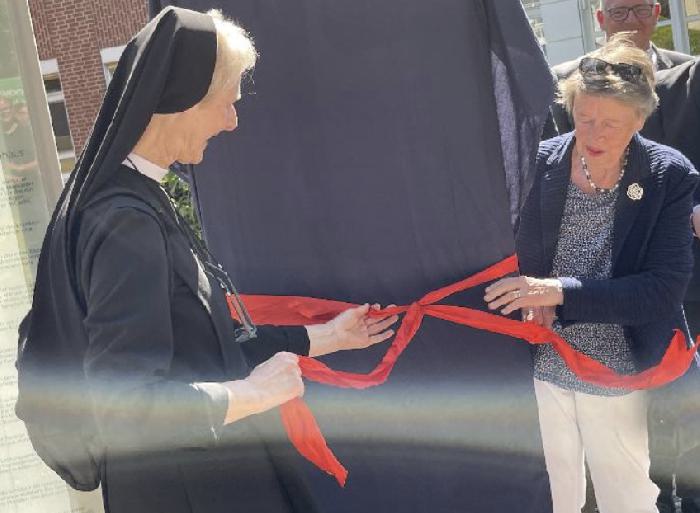
|
Jahr |
_ |
Sister Marianne Kamlage, Provincial Councilor from the Motherhouse M├╝nster-St. Mauritz, unveiled the historical marker together with Ursula Ansorge. | |
|
Die Bekennende Kirche wendet sich offen gegen den Totalit├Ątsanspruch des NS-Staates.
| _ |
1934 |
_ |
Bei der Volksabstimmung ├╝ber die Zusammenlegung der ├ämter des Reichskanzlers und des Reichspr├Ąsidenten werden in Dorsten 4.345 Ja- und 1.396-Nein-Stimmen gez├Ąhlt. Die Schwestern des Krankenhauses und des Ursulinenklosters sowie die Patres des Franziskanerklosters werden ├Âffentlich beschuldigt, zum gro├čen Teil mit Nein gestimmt zu haben. |
|
|
1939 1945 |
_ |
Im Zweiten Weltkrieg sind die Krankenschwestern gro├čen Belastungen ausgesetzt. 1941 pflegen 39 Franziskanerinnen Patienten des Krankenhauses, zu denen auch Zwangsarbeiter und Kriegsgefangene geh├Âren. | |
|
In England geht die erste Atomuhr in Betrieb. Abschluss der Krankenpflegeschule | _ |
1955 |
_ |
Die Mauritzer Ordensschwestern ├╝bernehmen die Leitung der Krankenpflegeschule, die im ÔÇ×Beckmannschen HausÔÇť an der Gahlener Stra├če eingerichtet wird. Die Schule zieht 1974 an den H├╝lskampsweg um und wird 2006 in das St. Elisabeth-Bildungsinstitut f├╝r Gesundheitsberufeumfirmiert. Seit 1988 werden hier auch Ordensfrauen aus Korea, Nigeria und Kamerun ausgebildet. |
|
|
1989 |
_ |
Die am St. Elisabeth-Krankenhaus t├Ątigen Ordensschwestern beziehen ihr neues Wohnheim an der Kolkstra├če. | |
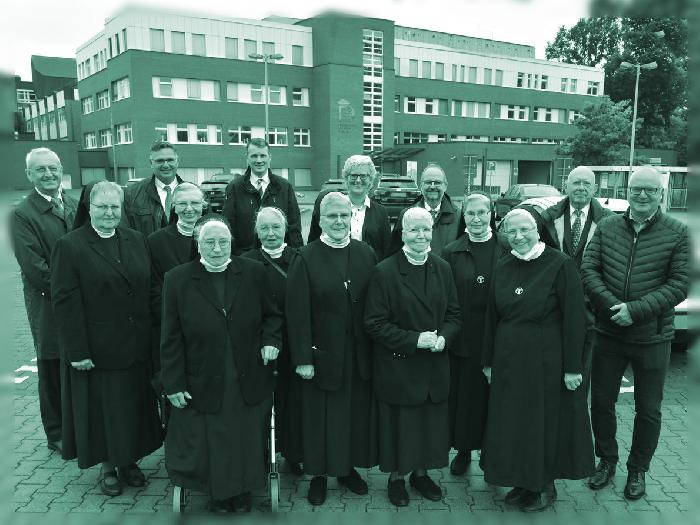 Abschied aus Dorsten |
2021 |
_ |
Die letzten Schwestern vom ÔÇ×Regulierten Dritten Orden des hl. FranziskusÔÇť werden mit einem Dankgottesdienst am St. Elisabeth-Krankenhaus in das Mutterhaus nach M├╝nster-St. Mauritz verabschiedet. |
[zurück]
Daten und Fakten
Eröffnung - 26.06.2023
Adresse - Main entrance
Geodaten -
The unveiling of the 47th station in Dorsten marked a true premiere: For the first time, two historical markers stand harmoniously side by side at a single location in Dorsten.
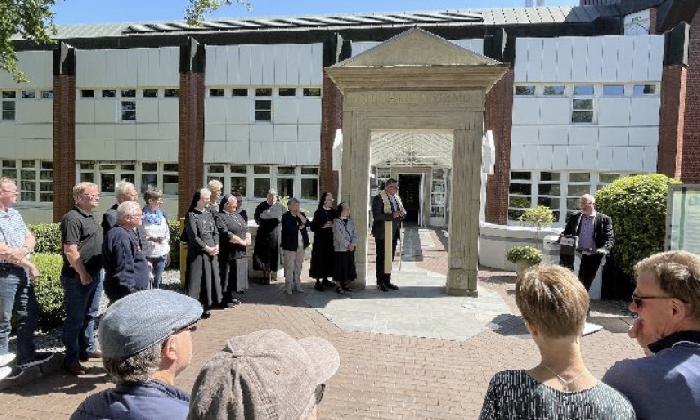
During the ceremony for the new historical marker, Hospital CEO Guido Bunten welcomed a delegation from the religious community of the Saint-Mauritz Motherhouse in M├╝nster among the guests.
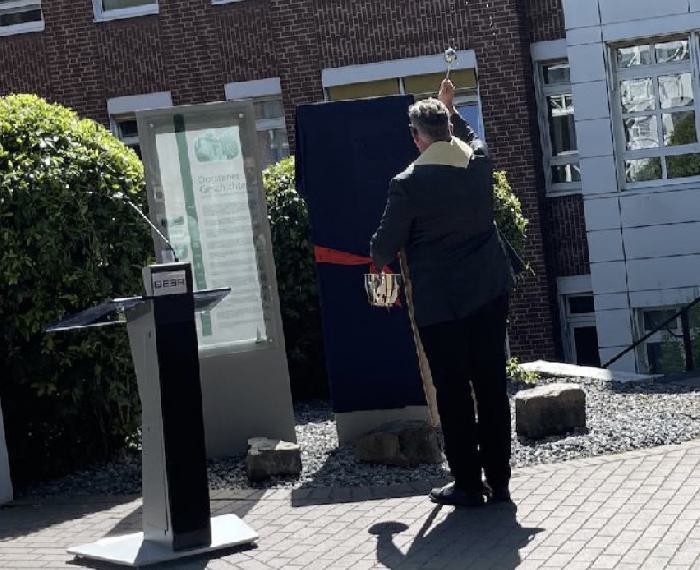
Following a devotional service and communal singing, Pastor Doctor Stephan R├╝diger blessed the historical marker.
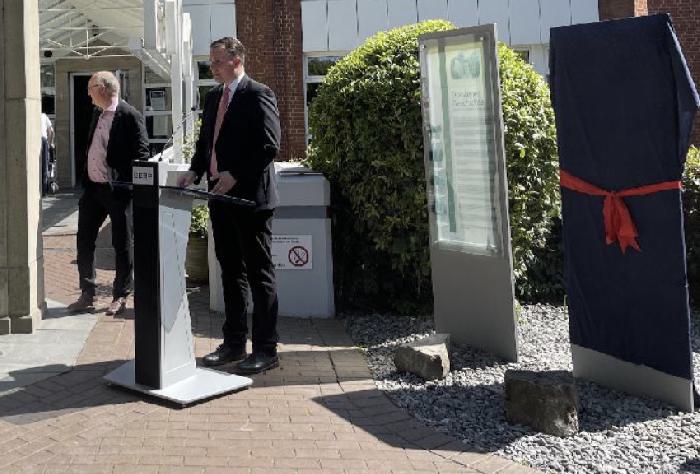
Mayor Tobias Stockhoff emphasized the blessed work for nearly 170 years in our hospital and for the well-being of the people in our city.
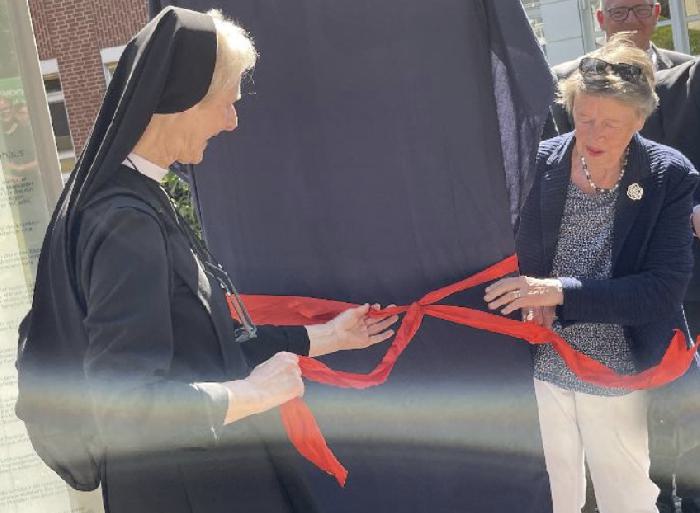
Sister Marianne Kamlage, Provincial Councilor from the Motherhouse M├╝nster-St. Mauritz, unveiled the historical marker together with Ursula Ansorge.
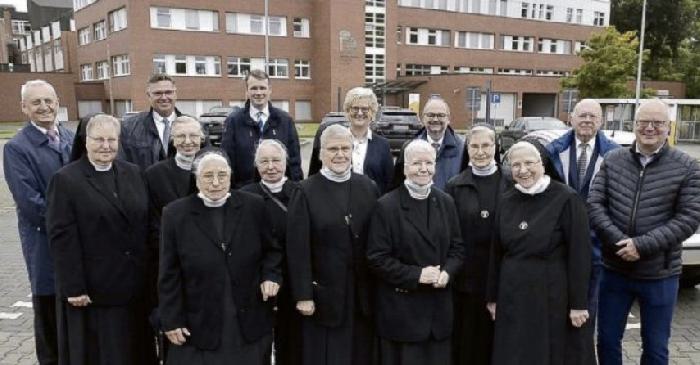
Farewell of the Franciscan Sisters from St. Mauritz in the year 2021

